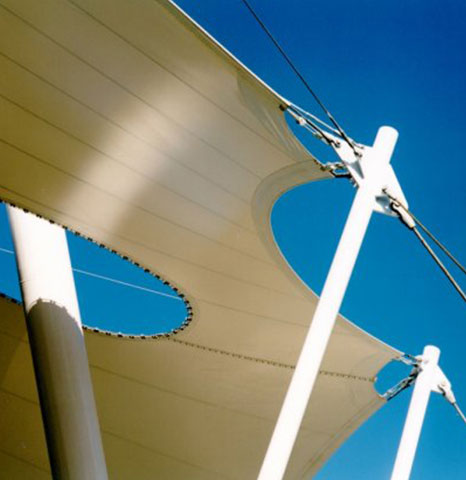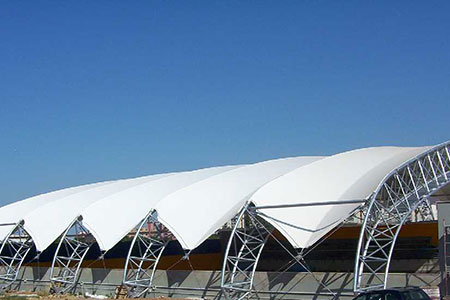Membrane structures were originally used to provide shelter where materials were scarce, or mobility was required. Developments in material technology and the understanding of the structural behavior tensile membrane structure mean that it is now technically feasible to enclose very large spaces with a minimum of material.
Due to variation of transmittance, reflectivity and emissivity of the membranes accomplished in the solar and infrared radiation band separately, tensile structures play a useful role in the relevance of environmentally friendly.
Besides, these structures can be used as climate modifiers in both hot and cold regions, offering in some circumstances conditions suitable for human occupation which conventional buildings may be sited and operated in a highly efficient manner.
Construction Advantages of Membrane Structures
The Construction of Membrane structures offer the following advantages: −
- Low consumption of resources
- Short installation time
- Limited number of personnel required
- Deployable at different undergrounds without any destructive installations
Environmental Properties of Membrane Structures
Roofing membrane structures have very little thermal mass & as a consequence, react very quickly to changes in the environment around them. Followings are the Environmental properties of membrane structures are:
- Optical properties:
Tensile Membrane Structures (TMS) allows to control the light transmittance in the covered area. This results in the tendency of fabric membrane properties to change more significantly at higher angles of solar incidence, which greatly reduces the solar energy and heat gain that enters the structure, thus resulting in less energy used within a building.
- Thermal Properties:
The large surface area of tensile structures compared to their thickness means that they have insufficient mass to significantly affect their thermal behavior. The amount and direction of the conduction of heat through the fabric material depends on a number of changeable factors like air temperatures, the wind speed, U-value, the thickness of the fabric etc.
As a leading membrane structures manufacturers, Hindustan Alcox Limited specializes in creating customized membrane structures with sophisticated designed practices. Our fabric architecture also includes tensile membrane structures, which require a prior understanding of shape and form, the behavior of the materials used and the forces acting on it.



